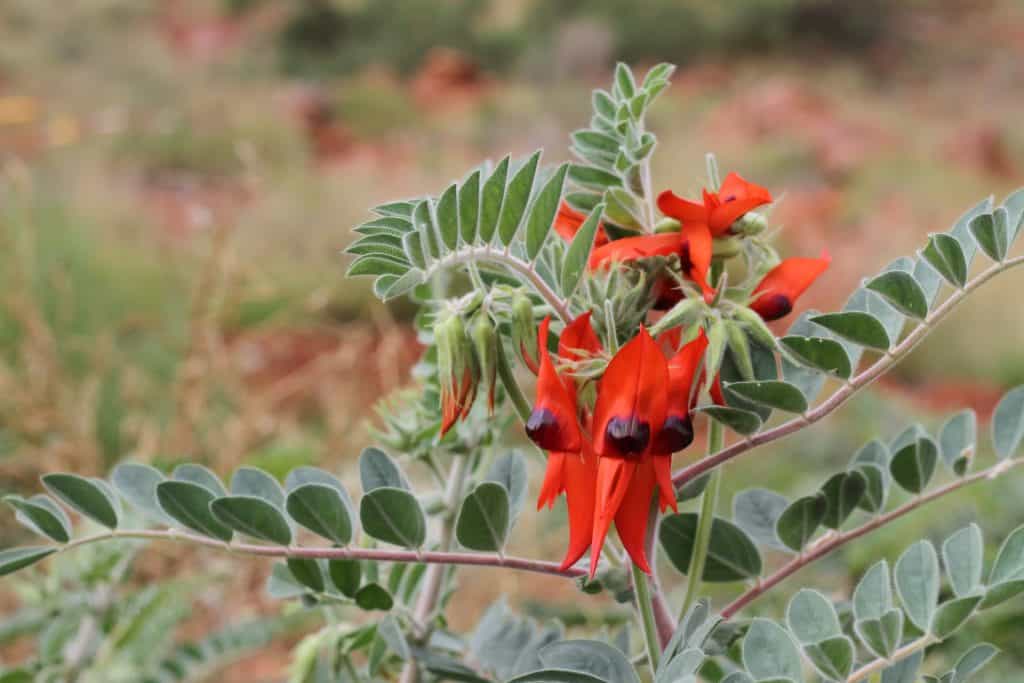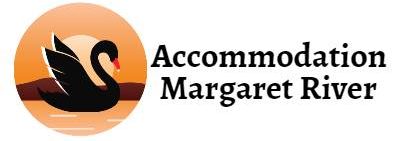10+ Places to See Wildflowers + Flora Margaret River (Locals Guide)
If you’re looking for the best flora Margaret River has to offer, you have come to the right place!
Margaret River is famous for it’s flora and wildflowers. During Spring, from September to November, the region comes alive with over 2,500 different species of wildflowers, including 150 native orchids.
In the South-West, there is such a huge variety of different plant species that it’s been named one of only 35 biodiversity hotspots on the planet!
The Margaret River wildflower season begins at the northern end of the capes near Busselton and moves south towards Augusta as spring progresses. With this in mind, I’ve listed these wildflower hot spots following the coastline from North to South to help you plan.

Best Places To See Flora in Margaret River
1. Ludlow Tuart Forest, Busselton
The Margaret River wildflower season begins at the northern end of the capes near Busselton, making it a prime location for spotting wildflowers in Busselton. Nearby, the 2000-hectare Ludlow Tuart Forest National Park is the largest remaining area of pure Tuart forest in the world.
A number of beautiful scenic drives provide outstanding views of spectacular grey-trunked Tuart trees. Orchids feature prominently in the flora list in springtime. For a more intimate experience, there’s a brief but informative walking trail off Higgins Road in the Shire of Capel that’s worth exploring.
See: Tuart Trees, Yellow Flowering Hibbertia, Hardenbergia, Cape Spider Orchid.
Get there: Easy access via Tuart Drive off Bussell Highway.
2. Ambergate Reserve, Busselton
Ambergate Reserve is a botanical wonderland, home to a staggering 326 species of native blooms. Wander along a scenic four-kilometer trail that takes you through the heart of this floral paradise, where you’ll encounter exotic orchids, elusive Verticordia, and vibrant Christmas tree displays come December. For those keen to learn more, there’s a cozy interpretive shelter stocked with informative brochures and details about the walking trail.
See: Spider, Donkey, Enamel, Jug, Rattle Beak, Pink Fairy, White Bunny, Hare, Flying Duck and Blue Lady Orchids, Verticordias, Swan River Myrtle, Trigger Plants, Coral Vine, Grass Trees.
Get there: Travel west along Busselton Bypass and turn left onto Queen Elizabeth Avenue. Continue to the carpark on the corner of Doyle Road, some 7km south of the Bypass.
3. Whicher Range, Busselton
Two things are crystal clear: You won’t discover the area’s most stunning wildflowers unless you venture into the Whicher Range. Also, if you don’t take the time to park and wander through the roadside bush, you’ll likely overlook the myriad of small, vibrant blooms that make this Busselton region so unique.
Get there: The Vasse Highway and Sues Road offer the quickest and easiest access to this biodiverse area but many minor roads will also provide access to different parts of the Whicher Range.
4. Captain Baudin Reserve, Busselton
Squeezed between the expansive ocean and the Vasse-Wonnerup Estuary, Captain Baudin Reserve is a haven for coastal wildflowers and a prime spot for birdwatching. The Vasse Estuary wetlands are so ecologically significant that they’ve been designated as ‘Wetlands of International Importance’ by the Ramsar Convention. Come springtime, these wetlands become a bustling hub for avian activity, hosting over 30,000 birds from 80 different species—many of which are rare!
See: Caladenia Procera (Carbunup King Spider Orchid), Rattle Beak, Enamel, Coastal, Flying Duck, King-In-His-Carriage, Donkey and Jug Orchids. Kangaroo Paws, Hibbertia (Buttercups), Blue Grass Lily.
Get there: Travel towards central Busselton off Bussell Highway via Causeway Road. Turn right onto Peel Terrace and onto Layman Road. Access is off Layman Road in the Wonnerup area on the east side of Port Geographe.
5. Big Rock Reserve, Dunsborough
Beautiful views over Dunsborough, Busselton and the Indian Ocean will reward you for climbing to the top of Big Rock. Nestled on the Leeuwin Naturaliste Ridge, this Reserve is a tapestry of diverse plant life, cradled between rugged valleys and gentle sandy rises. Plus, the steep inclines have given way to two main streams that meander through this natural sanctuary.
See: Chapman’s Spider Orchid, Cowslip Orchid, Common Donkey Orchid, Purple Enamel Orchid, Forest Mantis.
Get there: Take Caves Road to Dunsborough and then to Quedjinup. Turn left onto Yungurra Drive, then right onto Jones Road and right onto Big Rock Place.
6. Meelup Regional Park, Dunsborough
Spanning a remarkable 11.5 kilometers from Dunsborough all the way to Bunker Bay, Meelup Regional Park is a coastal gem. Thanks to its northeast-facing shoreline, the area offers a unique sanctuary where towering trees and lush foliage extend right up to the water’s edge. But that’s not all—this park is also a prime spot for whale-watching and boasts some of the most stunning beaches you’ll find in Western Australia.
See: Several varieties of Spider, Mustard, Jug, Donkey and possibly the rare Dunsborough Orchid. Pea Bushes, Acacias (Wattles), Hakeas, Hibertia (Buttercup).
Get there: Take Cape Naturaliste Road from the center of Dunsborough, and turn right down Meelup Beach Road after around 5 minutes. Turn right at Meelup Beach where car parking is available. Walk on a coastal track east towards Castle Rock, or west to Eagle Bay.
7. Cape Naturaliste, Leeuwin-Naturaliste National Park
During Spring, the Cape Naturaliste region bursts into a vibrant tapestry of coastal wildflowers. Stroll along the user-friendly trails that encircle the iconic Cape Naturaliste Lighthouse, and you’ll be treated to breathtaking vistas of not just wildflowers, but also coastal landscapes, and if you’re lucky, seals and whales when they’re in season. Starting at the Lighthouse, the Cape to Cape Track begins and even features a wheelchair-friendly path leading to the stunning Sugarloaf Rock.
See: Dunsborough and Spider Orchid, Naturaliste Nancy, One-Sided Bottle Brush.
Get there: Take the beautiful drive along Cape Naturaliste Road from Dunsborough. 10-15 minutes brings you to Cape Naturaliste Lighthouse, where car parking is available.
8. Margaret River Walk Trails, Margaret River
A visit to Margaret River wouldn’t be complete without exploring the township’s easily accessible, pleasant walk trails, which are rich in wildflower Margaret River species. The trails here are rich in history and include the Riverside Trail, Wadandi Track and the Carters Road Walk Trails. Don’t forget the longer walk from Rotary Park to Ten Mile Brook Dam.
See: Hovea, Hibbertia, Wattle, Yellow Peas, Flying Duck Orchid, King-In-His Carriage, and Rattle Beaks.
Get there: Walk trails begin within a short walk or drive from the center of Margaret River.
9. Boranup Forest, Leeuwin-Naturaliste National Park
Journey through the majestic Boranup Karri Forest to see the slender, pale-barked beauties towering above your head, and wildflowers around your feet. I recommend taking the scenic detour via Boranup Drive (unsealed). While here, take time to explore the caves that lie beneath the Leeuwin Naturaliste Ridge.
See: Deep Blue Karri Hovea, Trailing Clematis, Yellow Cone Bush and Patersonia, Forest Mantis, Cowslip, Common Donkey and Pink Fairy Orchids.
Get there: From Margaret River, travel south on Caves Road, which provides easy access to the forest.
10. Cape Leeuwin, Augusta
Take in the spectacular coastal scenery at Cape Leeuwin, where the Southern and Indian Oceans meet to crash fiercely against the cape. Combine your wildflower walk with a visit to Cape Leeuwin Lighthouse and the nearby town of Augusta.
See: Augusta Bee, Funnel Web Spider and Vanilla Orchids, Wisteria, Clematis, Coastal Pimelea and Fan flowers.
Get there: Travel south from Augusta via Blackwood Avenue. Parking is available at Cape Leeuwin Lighthouse.
Wrapping Up: Flora Margaret River
And there you have it—a comprehensive guide to the awe-inspiring flora Margaret River has to offer! From the northern capes near Busselton to the southern reaches towards Augusta, we’ve explored a botanical paradise that’s home to over 2,500 species of wildflowers, including 150 native orchids. The South-West is such a treasure trove of Margaret River flora that it’s been named one of only 35 biodiversity hotspots on the planet!
Whether you’ve wandered through the towering tuart trees of Ludlow Forest or marveled at the kaleidoscope of orchids in Ambergate Reserve, I hope this guide has enriched your appreciation for one of the world’s most extraordinary biodiversity hotspots.
Read More on Nature and Outdoors:
